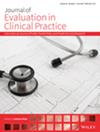Risk Mitigation Measures Captured by a Tertiary Hospital's Disaster Simulation: An Observational Study
Abstract
Aim
To document the challenges experienced and adaptations made during a simulated hospital disaster, and consider the implications of the observations for hospital disaster preparedness.
Design
Nonparticipant observational assessment.
Methods
Nonparticipant observations of an exercise simulating a disaster were undertaken by two researchers. The researchers shadowed triage team members, complementing this with observations of the Hospital-Emergency-Operations-Centre, theaters, wards, and Emergency Department subsections such as Resuscitation, Acute, Minor-Injuries-Clinic, Children's emergency, and Mental health. Field notes were coded line-by-line through an inductive thematic analysis, which synthesized both challenges and observed adaptations to those challenges.
Results
The major challenges observed were deaths due to lack of critical care equipment, management of high number of minor injuries, lack of situational awareness, shortage of orderlies, and difficulties in patient tracking and bed allocations. Observed adaptations included pediatricians' treatment of adult patients with minor injuries, fast-tracking triage through ranking, manual ventilation during transfers, and batching of patients requiring imaging to utilize limited orderlies for transfers.
Conclusion
This observational study distills both challenges that clinicians may face in real disasters, and the improvisations that they can make to manage mass casualties.
Implications for Clinical Professions
Research findings hold promising potential in enhancing clinicians' disaster preparedness by articulating specific interventions on mass-casualty management within limited resources.
Impact
Unforeseen challenges arise when clinicians are confronted with disaster casualties. This study addresses that problem by not only preempting such challenges, but by also discussing practical solutions. The findings can enable a positive impact on clinicians' readiness for mass casualty influx.
Reporting Method
The 21-item checklist of the Standards for Reporting Qualitative Research (SRQR).
Patient or Public Contribution
Although this study was not focused on a patient population, our research institute incorporates healthcare consumers' advice in all our work.


 求助内容:
求助内容: 应助结果提醒方式:
应助结果提醒方式:


